Non-native invasive species are difficult to eradicate – but a good programme for control will target species preventing ‘good ecological status’ or causing deterioration.
American signal crayfish (Pacifastacus leniusculus)
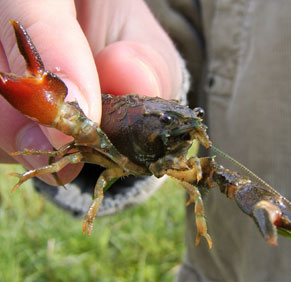 Found throughout England, these 15cm long beasts are aggressive, breed faster than the native species, and damage banks with their burrowing
Found throughout England, these 15cm long beasts are aggressive, breed faster than the native species, and damage banks with their burrowing
White-clawed crayfish, which are native to the UK, are now seriously endangered, thanks to the spread of their cousins from across the pond – the much larger and more aggressive American signal crayfish.
American signal crayfish (Pacifastacus leniusculus) not only drive out native white clawed crayfish as they compete for food and habitat, but also carry a water-borne fungus which is fatal to our native species. It is predicted that white clawed crayfish could become extinct in the UK within decades if efforts are not made to protect them.
Himalayan balsam (Impatiens glandulifera)
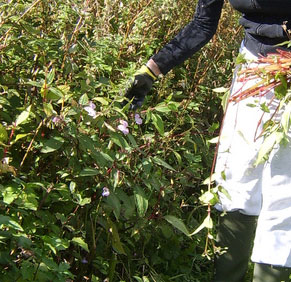 Despite its soothing name, this densely growing pink and red-stemmed weed stifles any native grasses and plants in its path
Despite its soothing name, this densely growing pink and red-stemmed weed stifles any native grasses and plants in its path
Himalayan balsam is a native of the western Himalayas. Introduced to Britain in 1839, it escaped from gardens and rapidly colonised river banks and areas of damp ground.
It is the tallest annual plant in Britain, growing up to 3m high. The characteristic purplish-pink slipper-shaped flowers appear in June.
Himalayan balsam plants grow in dense stands that suppress the growth of native grasses and other flora. In autumn the plants die back, leaving the banks bare of vegetation, and therefore liable to erosion.
Water fern (Azolla filiculoides)
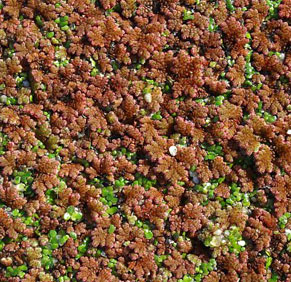 This popular pond plant, originally native only to North and Central America, is also known as Fairy Fern
This popular pond plant, originally native only to North and Central America, is also known as Fairy Fern
Water fern is a floating aquatic plant native to tropical America and is the only floating fern in Britain.
The leaves of water fern are no bigger than 2.5mm – forming small plants around 2.5cm long which cluster to form a dense mat and reduces oxygen levels in the water. Water fern floats on the surface of the water by means of numerous, small, closely-overlapping scale-like leaves, with their roots hanging in the water. The plants are so small, at no bigger than 2.5cm, that it can easily be transported on other plants as a contaminant.
Japanese knotweed (Fallopia japonica)
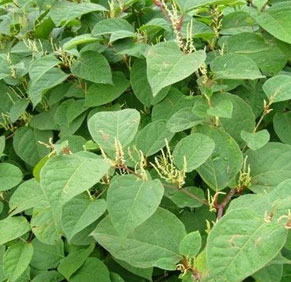 One of the most invasive weeds in Britain, the Japanese Knotweed’s dense growth crowds out native vegetation, erodes riverbanks and causes structural damage
One of the most invasive weeds in Britain, the Japanese Knotweed’s dense growth crowds out native vegetation, erodes riverbanks and causes structural damage
Japanese knotweed was first brought to Britain in the mid-nineteenth century as an ornamental garden plant. Since then it has caused serious problems in a range of habitats – particularly roadsides, riverbanks and derelict land – by displacing native flora and even causing structural damage.
Every year, Japanese knotweed causes £150 million worth of damage and disruption throughout the UK.
Some waterways become choked, railways need constant attention and many development sites become overrun by the plant.
In 2010, the government licensed the release of a biological control against Japanese knotweed.
New Zealand pygmy weed (Crassula helmsii)
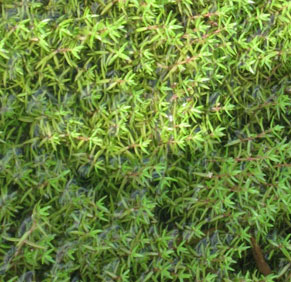 New Zealand Pigmy weed, also known as Australian Swamp Stonecrop, was originally sold in garden centres as an ‘oxygenating plant’
New Zealand Pigmy weed, also known as Australian Swamp Stonecrop, was originally sold in garden centres as an ‘oxygenating plant’
This species was first introduced for sale in England in 1927. Since the late 1970s it has spread rapidly north and west. Between 1970 and 1986, it was recorded in 33 10km squares in Britain and Ireland. It is now widespread in England, where it is causing difficulties.
A perennial herb that grows submerged in sheltered waters up to three metres deep or as an emergent on damp ground. It can form dense, virtually pure stands. It generally grows vigorously in sites to which it is introduced, rapidly producing high biomass, at the expense of the indigenous plant species; stands may become extremely dense
Floating pennywort (Hydrocotyle ranunculoides)
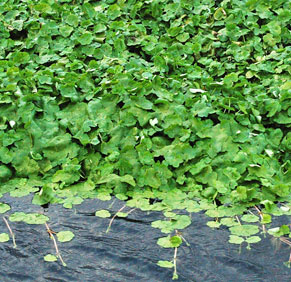 Introduced to the UK in the 1980s by the aquatic nursery trade, this fleshy-stemmed plant uses its roots to interweave a floating mat of lush foliage
Introduced to the UK in the 1980s by the aquatic nursery trade, this fleshy-stemmed plant uses its roots to interweave a floating mat of lush foliage
Floating pennywort was first brought to Britain in the 1980s and is still sold as a plant for aquariums and garden ponds.
It now grows in the shallow margins of slow-flowing water bodies (particularly ditches, slow flowing dykes and lakes), and forms dense interwoven mats of vegetation, which can often be mistaken for solid ground. These mats quickly cover the water surface, ruining the habitat for other wildlife.
American mink (Mustela vison)
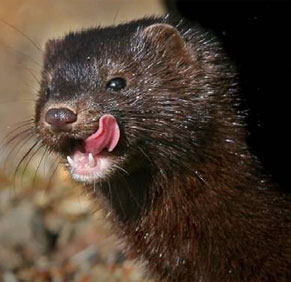 American mink first arrived in Britain in 1929, but only in commercial fur farms – now as a result of escapees and deliberate releases, it is virtually impossible to estimate the number of mink living in our rivers
American mink first arrived in Britain in 1929, but only in commercial fur farms – now as a result of escapees and deliberate releases, it is virtually impossible to estimate the number of mink living in our rivers
Mink are native to North America but were bought into Britain in the early 20th century to be bred for their fur.
By the 1950s mink escaped from fur farms and spread throughout the country. They usually hunt for food in woodlands and near watercourses and eat fish, small mammals and birds. They also prey upon poultry on farms and fish stocks in lakes. Mink often need to be controlled because of the damage that they can cause to wildlife, fisheries and property. They are a particular danger to our native water voles, which are protected in this country. Currently mink are trapped and destroyed to minimise the damage they can wreak on our native species.
The River Basin Management Plan
The River Basin Management Plan contains 25 generic measures relating to invasive non-native species.
Actions in the Kennet Catchment:
- Providing advice and training on identification, control and disposal of invasive non-natives (ARK).
- Smart trapping for mink in West Berkshire (BBOWT)
- Mink rafts, Wiltshire (ARK)
- Floating Pennywort removal on Foudry Brook (Reading District Angling Association)


 Found throughout England, these 15cm long beasts are aggressive, breed faster than the native species, and damage banks with their burrowing
Found throughout England, these 15cm long beasts are aggressive, breed faster than the native species, and damage banks with their burrowing Despite its soothing name, this densely growing pink and red-stemmed weed stifles any native grasses and plants in its path
Despite its soothing name, this densely growing pink and red-stemmed weed stifles any native grasses and plants in its path This popular pond plant, originally native only to North and Central America, is also known as Fairy Fern
This popular pond plant, originally native only to North and Central America, is also known as Fairy Fern One of the most invasive weeds in Britain, the Japanese Knotweed’s dense growth crowds out native vegetation, erodes riverbanks and causes structural damage
One of the most invasive weeds in Britain, the Japanese Knotweed’s dense growth crowds out native vegetation, erodes riverbanks and causes structural damage New Zealand Pigmy weed, also known as Australian Swamp Stonecrop, was originally sold in garden centres as an ‘oxygenating plant’
New Zealand Pigmy weed, also known as Australian Swamp Stonecrop, was originally sold in garden centres as an ‘oxygenating plant’ Introduced to the UK in the 1980s by the aquatic nursery trade, this fleshy-stemmed plant uses its roots to interweave a floating mat of lush foliage
Introduced to the UK in the 1980s by the aquatic nursery trade, this fleshy-stemmed plant uses its roots to interweave a floating mat of lush foliage American mink first arrived in Britain in 1929, but only in commercial fur farms – now as a result of escapees and deliberate releases, it is virtually impossible to estimate the number of mink living in our rivers
American mink first arrived in Britain in 1929, but only in commercial fur farms – now as a result of escapees and deliberate releases, it is virtually impossible to estimate the number of mink living in our rivers